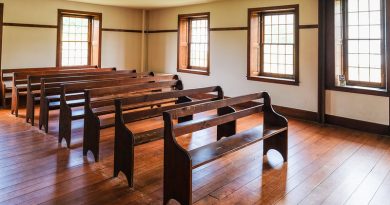Living the Amish Way in Ohio
Wayne and Holmes counties in Ohio have the United States’ densest concentration of Amish. The Amish are a group of dissenting Christians who grew out of the Anabaptist movement of Germany and Switzerland. They were led by Jacob Amman who split from the Mennonites group in 1690 because he thought they were “following too closely the ways of the world.”
Persecuted by both Church and State, the Amish came to the new world from 1720 into the nineteenth century in order to maintain their simple and devout lives. Amish settlements were small, isolated, and scattered back then but today they number 125,000 people in the United States. They’re known to some as “the quiet in the land” as they shun modern conveniences, dress plainly and rely on traditional farming, furniture-making and a host of shops selling home-made crafts and quilts to make their living.
Amish CultureThe Amish live separately from other people and reject many modern conveniences and luxuries, using technology only selectively. Their pace of life is much slower and more regimented; from an early age, children are brought up to follow in the footsteps of their parents in their beliefs and professions. Children are taught to be obedient and respectful and to yield to the larger purposes of the family and Amish community. Their emphasis is on personal responsibility, not individual rights. Gentleness and peace are valued over violence and aggression; pride, especially in yourself or your accomplishments, is frowned upon.Each Amish community follows a different set of society rules called ordnung. Electricity is considered unnecessary and cannot be used; telephones are not used at home, although there can be a community telephone in a booth; they can’t own cars so instead travel in horse-drawn carriages. Modern machinery cannot be used even for their faming. Clothing identifies the group, both to set them apart and bind them together, and it symbolizes submission to the collective good. The highly-held values of thrift, modesty, equality, and simplicity are exhibited through dress. Most Amish clothes are made in the home. Clothing is always worn out but not discarded and old rags are recycled into rugs. Adult women usually wear black to communion services, funerals, and during mourning. Also included in an Amish woman’s wardrobe are black stockings, tie shoes, a shawl, a bonnet, a cape, and an apron. Dresses of adult women are fastened with straight pins or sometimes snap fasteners, although young girls use buttons. A woman’s hair is parted in the middle and covered with a white organdy (stiff cotton or silk material) cap.Young adolescence is an exciting time for Amish boys and girls as this is when they get to explore and experience the wider world before they become baptized into the Amish church. This rite of passage, from the age of 18, is known as ‘Rumspringa’, when they are allowed to experience the ways of the English (Amish term for non-Amish). At 21 they must decide if the Amish way is for them, then they are required to settle down and lead exemplary Amish lives. Around one in ten young people decide to opt out of the community during their Rumspringa.
Work is looked upon as good and meaningful. A great deal of work is done in small groups and has a celebratory feel like cooking a meal together, building a barn, or quilting. Ninety percent of Amish income comes from non-farming activities: making crafts, quilts, and furniture is their main source of income. There are plenty of great buys to be had in the local shop or at the community’s farmers’ auction. Sometimes auctions are held for good causes, maybe to raise money for a new barn or to fund medical care for a sick Amish member who can’t afford health insurance. The Amish have no social security but pool together in times of need. The Church becomes a kind of savings bank reserved for the community, collecting ten percent of every Amish wage. Any patronage is doled out by the Deacon, a form of banker who delegates where the money should go. In this way, the Amish were able to survive the Great Depression of the 1930s and look out for each other during poor harvests today.
Tip for visiting the Amish in Berlin, OhioHolmes County in Ohio is home to 40,000 Amish people making it the largest Amish community in the world. Berlin is at the heart of this community and is a good base to start exploring the area. The best day to visit Holmes County is auction days. Find out through the local Tourist information bureau when and where auctions are taking place, generally on Wednesday and Thursday. Auctions are where the Amish sell their animals, farm products, furniture and crafts – the latter usually to the many tourists who flock to Berlin during the summer. The Amish don’t like having their photographs taken at close quarters because it encourages vanity; some believe photography makes “a graven image”, so if you want to take photos you will need to do it from a distance. You can live the Amish way by going on an Amish Tour with a reputed tour guide who will take you into Amish households: you’ll explore the country side, see Amish farmers at work in the field, observe Amish weaving baskets or making quilts and you’ll end the day with an authentic Amish meal in an Amish home.
Destination – Mid-West USA




